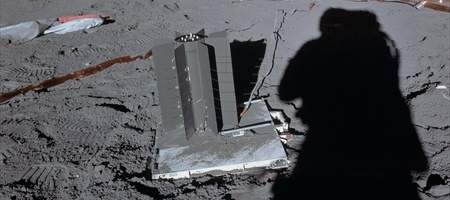NASA has restored the dust archives from the Apollo 14 and Apollo 15 moon landing missions.

A team of scientists at NSSDC, NASA’s permanent archive for space science mission data, restored data from the missions’ dust detectors which recorded information about the lunar surface. The team believe the last year and a half of the data has never been studied. The newly restored detectors contain information about the dust’s temperature and damage caused by high-energy cosmic particles and the sun’s ultraviolet radiation.
“This is the first look at the fully calibrated, digital dust data from the Apollo 14 and 15 missions,” said David Williams, a data specialist at NSSDC.
Restoring the data sets was a painstaking process that required some parts of the archive to be converted from old-fashioned microfilm records to digital. The records date back to 1971 when the two Apollo mission were completed at the height of the American ‘Space Race’.
It is hoped that the information from the Apollo 14 and 15 archives will add to information collected about the moon’s surface by more recent missions to the moon such as NASA’s Lunar Reconnaissance Orbiter (LRO).
“It’s one of those questions that scientists keep coming back to,” says Marie McBride who worked on restoring the archives.
“Just last week, LRO did some important measurements seeking dust profiles in the lunar atmosphere,” adds Rich Vondrak, a scientist working on NASA’s LRO data.
Apollo missions 14 and 15 were the 8th and 9th manned missions to the moon. Further scientific missions to understand the composition moon’s surface are planned by NASA’s Lunar Atmosphere and Dust Environment Explorer (LADEE) which is due to launch in 2013.






